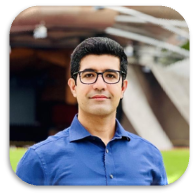About the speaker
Hamed Rahmani (Member, IEEE) received the B.Sc. degree in electrical and computer engineering from the Sharif University of Technology, Tehran, Iran, the M.Sc. degree in electrical and computer engineering from Rice University, Houston, TX, USA, and the Ph.D. degree in electrical and computer engineering from the University of California Los Angeles. He is an Assistant Professor of Electrical and Computer Engineering at New York University (NYU). Before joining NYU, he held multiple industry and research positions. As a research scientist, he worked with IBM T. J. Research Center in Yorktown Heights, on high-speed electrical/optical interconnects. He was an Adjunct Professor at Columbia University, New York, NY, USA, and a Visiting Lecturer at Princeton University, where he offered graduate-level courses in analog and RF circuit design. He was also a Senior RFIC Design Engineer with Qualcomm Inc., where he focused on advanced 5G transmitters for cellular applications and RF front-end designs. He is the recipient of several prestigious awards and fellowships, including the IEEE MTT-S Graduate Fellowship for medical applications and the Texas Instruments Distinguished Fellowship.
Abstract
In this talk, we review recent advances in low-power wireless data transceivers, wireless power delivery systems, and circuit/antenna co-design techniques. We discuss the opportunities offered by SoC-based platforms to enhance the operation of next-generation IoT and medical devices by exploiting machine-learning-assisted sensing. Energy harvesting SoC devices are the most promising solution for future wireless sensing with applications in medical implants and IoT. On one side, energy extraction from ambient sources facilitates permanent powering techniques required for long-term operation. On the other side, the high integration capability of commercial CMOS technology opens the opportunity for high-resolution sensing and data communication with a compact form factor. My research builds a foundation for joint wireless power delivery, low-power sensing, and wireless communication.
